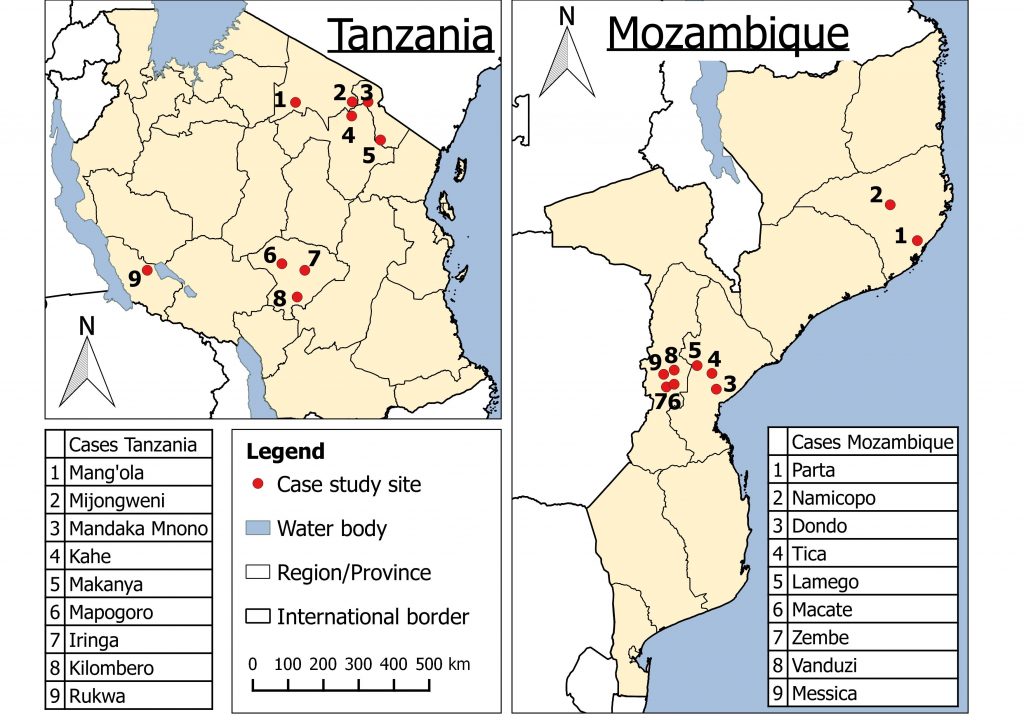The map below shows the location of field-work sites in the two countries studied.
There were nine sites in Tanzania comprising 1361 households.
There were nine sites in Mozambique comprising 1372 households.
A sample of 150 households at each site was initially randomised, based on lists provided by local administrative authorities. However, this was then adjusted to ensure that the sample for each site included a minimum representation of at least 50 irrigating and non-irrigating households. Non-irrigating households were farmers who relied on rainfall only.
About the sites
The sites grew rice, maize, vegetables, beans, onions, tomatoes and bananas – or a combination of these crops.
Some farms had received government investment, others had not. The irrigation sites were all initiated by farmers but sometimes they successfully lobbied the government for support to improve their irrigation systems. This included the construction of more permanent water diversion structures or the provision of funding for lining earthen canals with cement.
Irrigation methods included: motor pumps to draw surface water from rivers or lakes or ground water from wells; weirs to divert streams into canals; lifting water using buckets from a river or well; spreading of flood water across fields (spate irrigation); management of water movement in wetland areas or a combination of these methods.

